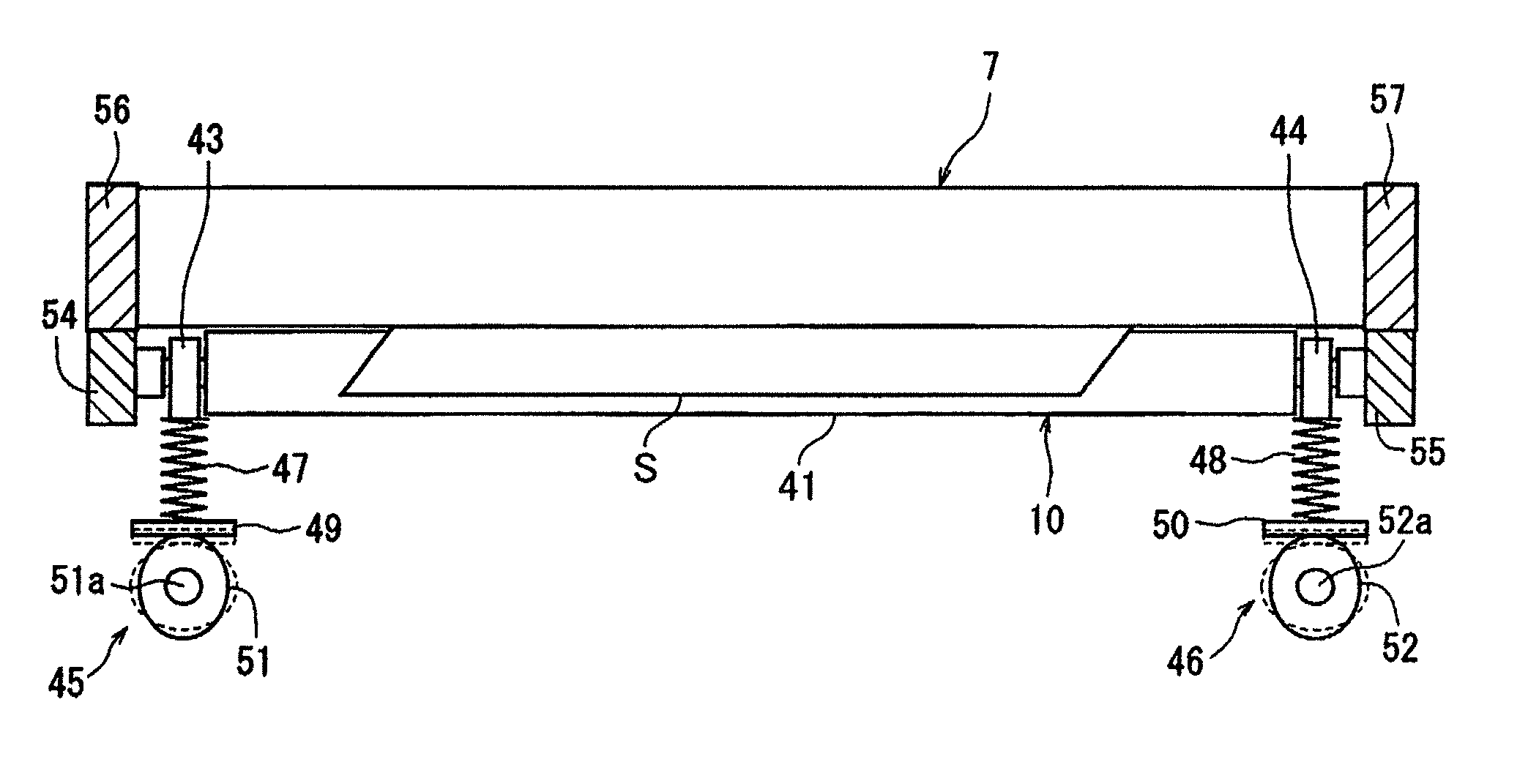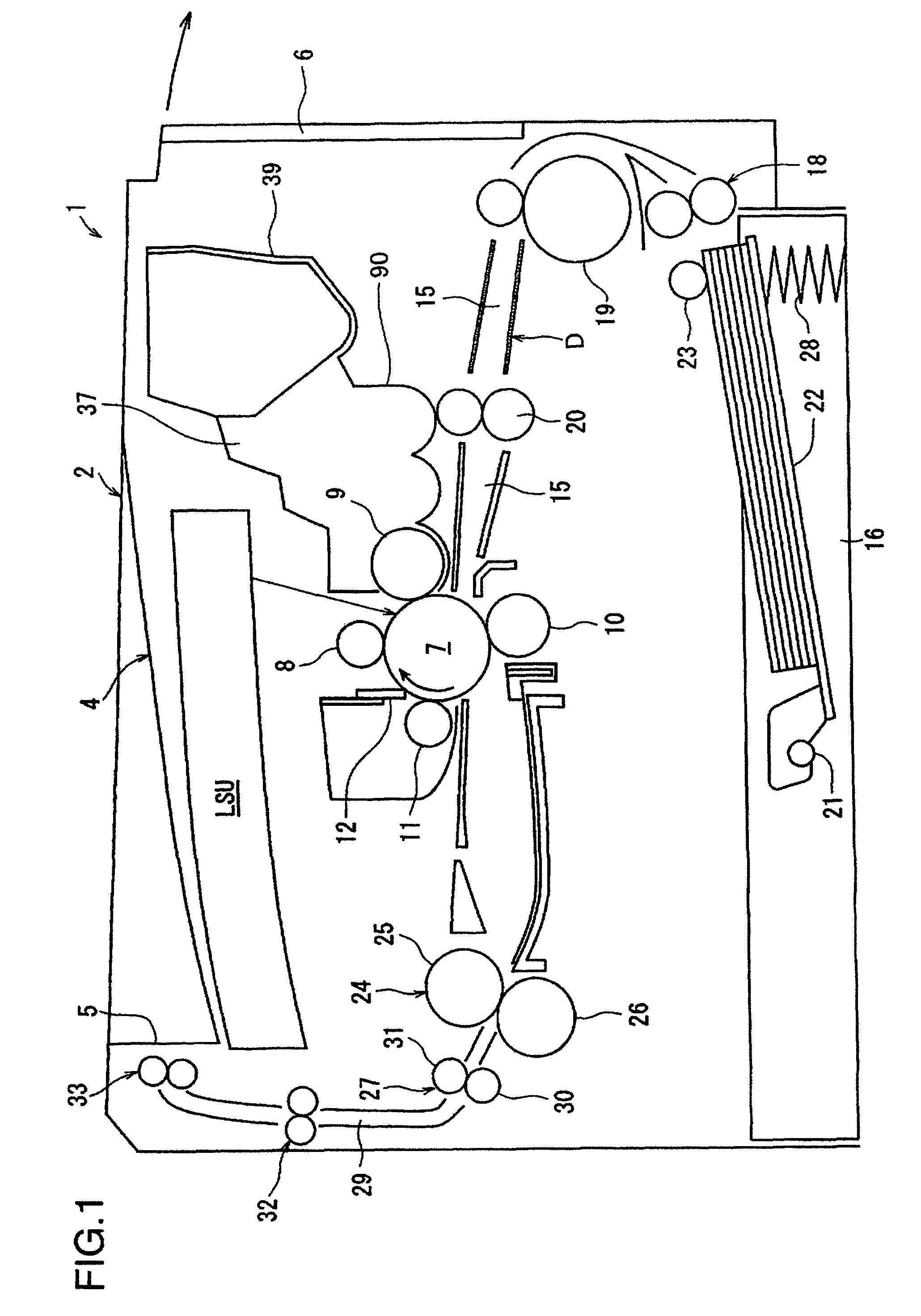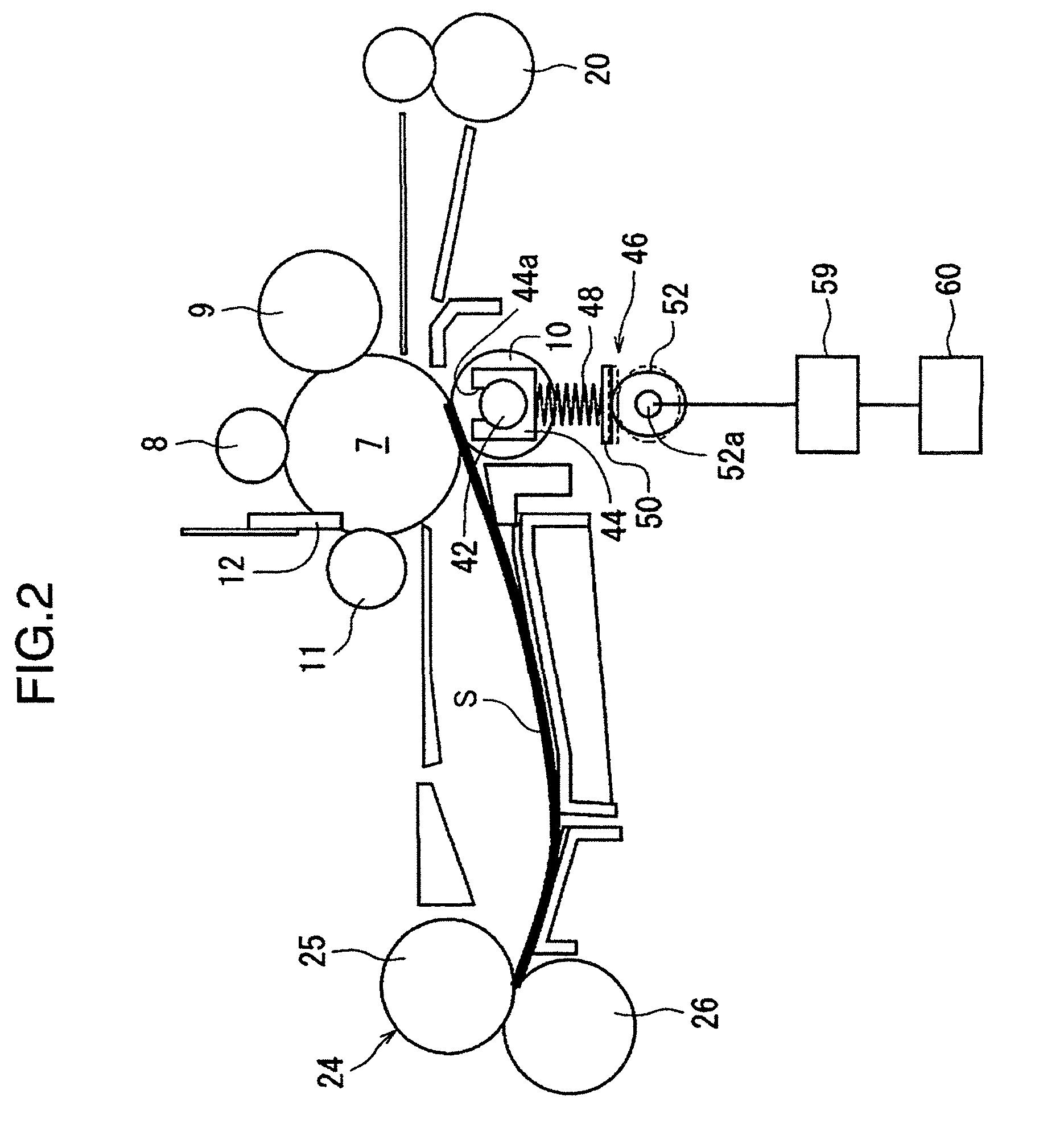Image forming apparatus provided with transfer roller
a technology of transfer roller and forming apparatus, which is applied in the direction of electrographic process apparatus, instruments, optics, etc., can solve the problems of large resistance variation in the use environment (temperature and humidity), abraded transfer roller, and increased resistance, so as to prevent the formation of black dots and suppress jitter and density unevenness
- Summary
- Abstract
- Description
- Claims
- Application Information
AI Technical Summary
Benefits of technology
Problems solved by technology
Method used
Image
Examples
first embodiment
[0028]An image forming apparatus according to the present invention is described with reference to the accompanying drawings. With reference to FIG. 1, a laser printer 1 (hereinafter, referred to merely as the “printer 1”) as an example of the image forming apparatus includes a printer main body 2 having a substantially rectangular parallelepipedic housing structure. Right side of the printer main body 2 in FIG. 1 is referred to as front side of the apparatus.
[0029]A sheet cassette 16 is arranged at the bottom of the printer main body 2. A bottom plate 22 as a sheet placing plate having one end thereof supported rotatably about a shaft 21, a compression coil spring 28 for pushing up the other end of the bottom plate 22, etc. are arranged in the sheet cassette 16. The upper surface of the leading end of the uppermost one of sheets stacked and accommodated on the bottom plate 22 is pressed in contact with a pickup roller 23 arranged in the printer main body 2. The pickup roller 23 fun...
second embodiment
[0071]Next, functions of the image forming apparatus 1 in the second embodiment are described. For example, a case is assumed where printing is performed using an A4-size sheet accommodated in the cassette 16 in the printer 1 shown in FIG. 1. A print signal for A4 size is transmitted from a personal computer to the controller 60 of the printer 1 by a user to input sheet information in the controller 60 of the printer main body 2. Here, if the biasing force changing mechanisms 45, 46 are set for the small size and are not so set as to give biasing forces suitable for the A4 size as the large size to the transfer roller 10, the controller 60 controls the mechanism unit 59 to set the eccentric cams 51, 52 at positions suitable for the A4 size.
[0072]Specifically, if the biasing force changing mechanisms 45, 46 are set for the B5 size, the controller 60 rotates the eccentric cams 51, 52 to narrow the distances between the roller bearings 43, 44 and operation plates 49, 50 to set the ecce...
third embodiment
[0088]Next, functions of the image forming apparatus 1 in the third embodiment are described. For example, a case is assumed where printing is performed using an A4-size sheet accommodated in the cassette 16 in the printer 1 shown in FIG. 1. A print signal for A4 size is transmitted from a personal computer to the controller 60 of the printer 1 by a user to input sheet information in the controller 60 of the printer main body 2. Here, if the biasing force changing mechanisms 45, 46 are not so set as to give biasing forces suitable for the A4 size as the large size to the transfer roller 10, the controller 60 controls the mechanism unit 59 to set eccentric cams 51, 52 at positions suitable for the A4 size.
[0089]Specifically, if the biasing force changing mechanisms 45, 46 are set for the B5 size, the controller 60 rotates the eccentric cams 51, 52 to narrow the distances between the roller bearings 43, 44 and operation plates 49, 50 to set the eccentric cams 51, 52 at the positions s...
PUM
 Login to View More
Login to View More Abstract
Description
Claims
Application Information
 Login to View More
Login to View More - R&D
- Intellectual Property
- Life Sciences
- Materials
- Tech Scout
- Unparalleled Data Quality
- Higher Quality Content
- 60% Fewer Hallucinations
Browse by: Latest US Patents, China's latest patents, Technical Efficacy Thesaurus, Application Domain, Technology Topic, Popular Technical Reports.
© 2025 PatSnap. All rights reserved.Legal|Privacy policy|Modern Slavery Act Transparency Statement|Sitemap|About US| Contact US: help@patsnap.com



